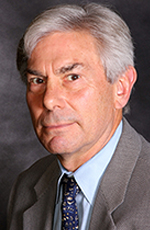|
|
CMO Notes

Matthew Miller, MD
Chief Medical Officer, WCHN
“Powering for Performance and Prosperity”—the P3 initiative.
Catchy title, right? Most of you are aware of our network wide initiative to examine everything we do in order to transform ourselves from a hospital centric organization to a healthcare company embracing population health, patient centricity and value based care—the triple aim redux. The imperative for P3 comes not only from our goal of transformation but also from the absolute necessity to manage our organization in the face of the draconian State hospital tax which costs us over $1 million dollars a week.
We are working with a major consulting company, Berkeley Research Group (BRG). BRG owns a terrific track record of helping hospitals become more efficient, including many in CT. After months of data analysis, they are helping us look at all aspects of our organization, with a financial goal of saving (through cost reduction or revenue enhancement) $70 million (5-8% of our budget) over the next 18 months.
Every part of the organization will be under scrutiny including labor, non-labor, WCMG, service lines, revenue cycle, IT and every support department. Medical Staff leadership is involved in the planning; P3 will be collaborative.
One project which touches the Medical Staff most directly is called “Care Transitions.” I am leading that work with Sharon Adams, our Chief Operating Officer and Chief Nursing Officer.
A number of teams are involved, but think about it this way:
- When patients enter our hospitals, particularly through our EDs, do they need to be in the hospital or will their needs be better served at home, in an ECF or with home care?
- If they do need to be hospitalized, how do we manage the encounter efficiently and accurately to then make the right decision about where they should get their care---admission, observation, teaching, non-teaching?
- Once in a bed, what’s their diagnosis? How long do they need to stay? How can we plan for their discharge and their daily needs from the beginning? How can we make sure their meds are right and that they or their families know and are prepared for what happens when they leave? How do we ensure that the caregivers post-discharge receive a warm handoff and all appointments are scheduled?
- Once discharged, wherever the next destination, how is that post-acute care managed? Do they really need a SNF? If so, how long should they stay there? How can post-discharge caregivers participate in efforts to eliminate unnecessary readmissions? Where does Palliative Care come in and when should that happen?
These are tough questions that we’ve wrestled with before, but you all know that we can do better and we’ll need your advice on the analyses and the solutions. We are all part of this, regardless of where we practice. I’ll give you updates as we move ahead and will report on some of the other work projects---regularly. Stay tuned.
Click here to return to the top of the page
|
|


